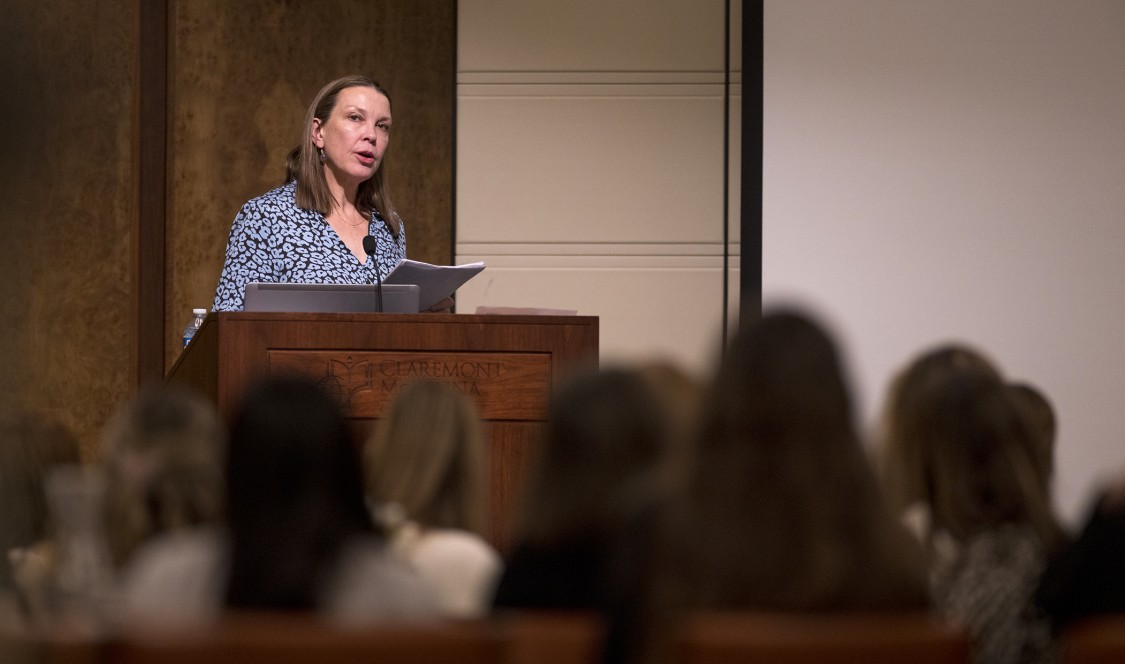Claremont McKenna Professor Lisa Cody traced the history of reproductive healthcare in the U.S. through the prism of 20th century popular media, including films, TV shows, and magazines during her Feb. 9 Athenaeum, “Silver Screens and Rap Sessions: How Women Took Abortion Rights from the Shadows to the Supreme Court.”
An associate professor of history at CMC, Cody is the author of the multi-award- winning book, “Birthing the Nation: Sex, Science, and the Construction of Eighteenth-Century Britons.” In her talk, she focused on the history and culture of abortion in the United States, and the transformation of reproductive healthcare from a privately held secret to one that is up for public debate.
Cody began by highlighting, “Where Are My Children?” a widely popular silent film produced, written, and directed by Lois Weber, which tells an abortion-themed story. When the film was released in 1916, Cody explained, “Not only was abortion illegal in every single U.S. state, so too, was birth control banned in many states. Birth control, abortion and premarital sex were risqué topics for a mass audience.”
Cody then expanded the talk to examine “a much longer history of abortion, contraception, and beliefs about embryonic life and women’s rights in the U.S.”
Speaker quote:
In its early days, “film was a new opportunity. It operated — in terms of surveillance and control — in a different way than books and pamphlets did in this period…it’s also a medium that women were very involved in. So, there were a disproportionate number of women directors and writers and Lois Weber is really considered the greatest of these early filmmakers. She brought situations to life. Her goal was to show people difficult situations, and not entertain them — not end up with schmaltzy, corny stories— but to get them to change their mind.”
From the audience: Tess, a Scripps first-year student
“From a historical perspective, how do you suggest that we bring abortion back into the private sphere and out of the public sphere?”
Prof. Cody: The Women’s Health Care movement during the 50s and 60s is a response to not having any other space where women can talk about, or learn about their bodies, or about contraception and abortion. But it was designed to be a private space because it had to be a safe space where you trust other people you’re talking to. But for our age now, when nothing is private at all, I don't know.

